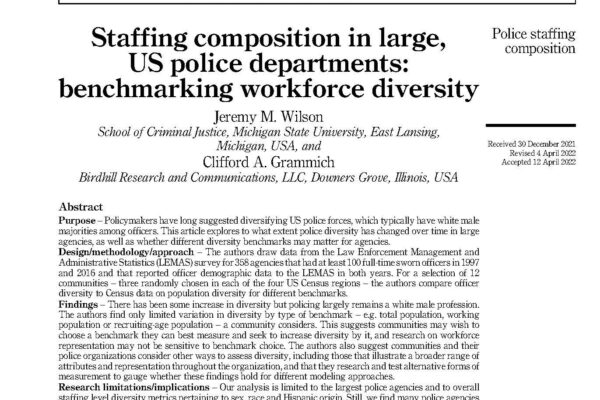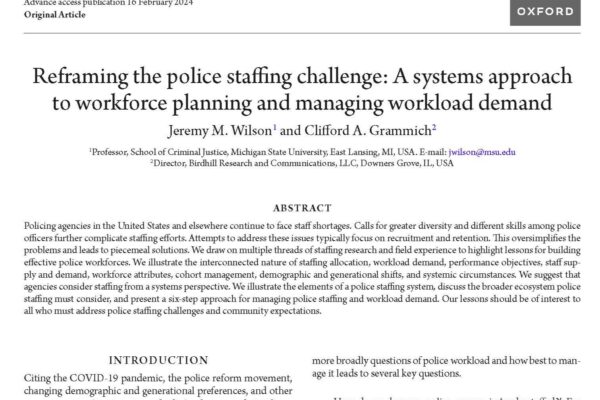Attitudes Toward the Police in Communities Using Different Consolidation Models. International Criminal Justice Review, Vol. 30(2): 219-234, 2020.
We surveyed residents in four communities with alternative models of policing: a merged department, two agencies that contracts for services, and a regional agency. We asked residents about their confidence in the police. We found that the type of police model was an important predictor of police confidence, controlling for other traditional measures of attitudes toward the police. Read More






